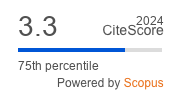Article | Open Access
Two Linguas Francas? Social Inclusion through English and Esperanto
| Views: | 12628 | | | Downloads: | 9455 |
Abstract: New forms of mobility presuppose a technological factor that frames it as ‘topological proximity,’ regardless of the nature of the mobile agent (human being, robot ware, animal, virus, digital object). The appeal of the so-called linguas francas is especially evident in human beings showing high propensity to move, i.e., motility. They are usually associated with transnational communication in multilingual settings, linguistic justice, and globalization. Paradoxically, such global languages foster mobility, but, at the same time, they may hinder social inclusion in the hosting society, especially for people in mobility. The article compares English as a lingua franca and Esperanto in the European context, putting together the linguistic hierarchy of transnational communication (Gobbo, 2015) and the notion of linguistic unease, used to assess sociolinguistic justice (Iannàccaro, Gobbo, & Dell’Aquila, 2018). The analysis shows that the sense of belonging of their respective speakers influences social inclusion in different ways. More in general, the article frames the linguistic dimension of social inclusion in terms of linguistic ease, proposing a scale suitable for the analysis of European contexts.
Keywords: Esperanto; hyper-place; lingua franca; linguistic easiness; linguistic justice; mobility; onlife; social inclusion; sociolinguistic justice
Published:
© Federico Gobbo, László Marácz. This is an open access article distributed under the terms of the Creative Commons Attribution 4.0 license (http://creativecommons.org/licenses/by/4.0), which permits any use, distribution, and reproduction of the work without further permission provided the original author(s) and source are credited.


